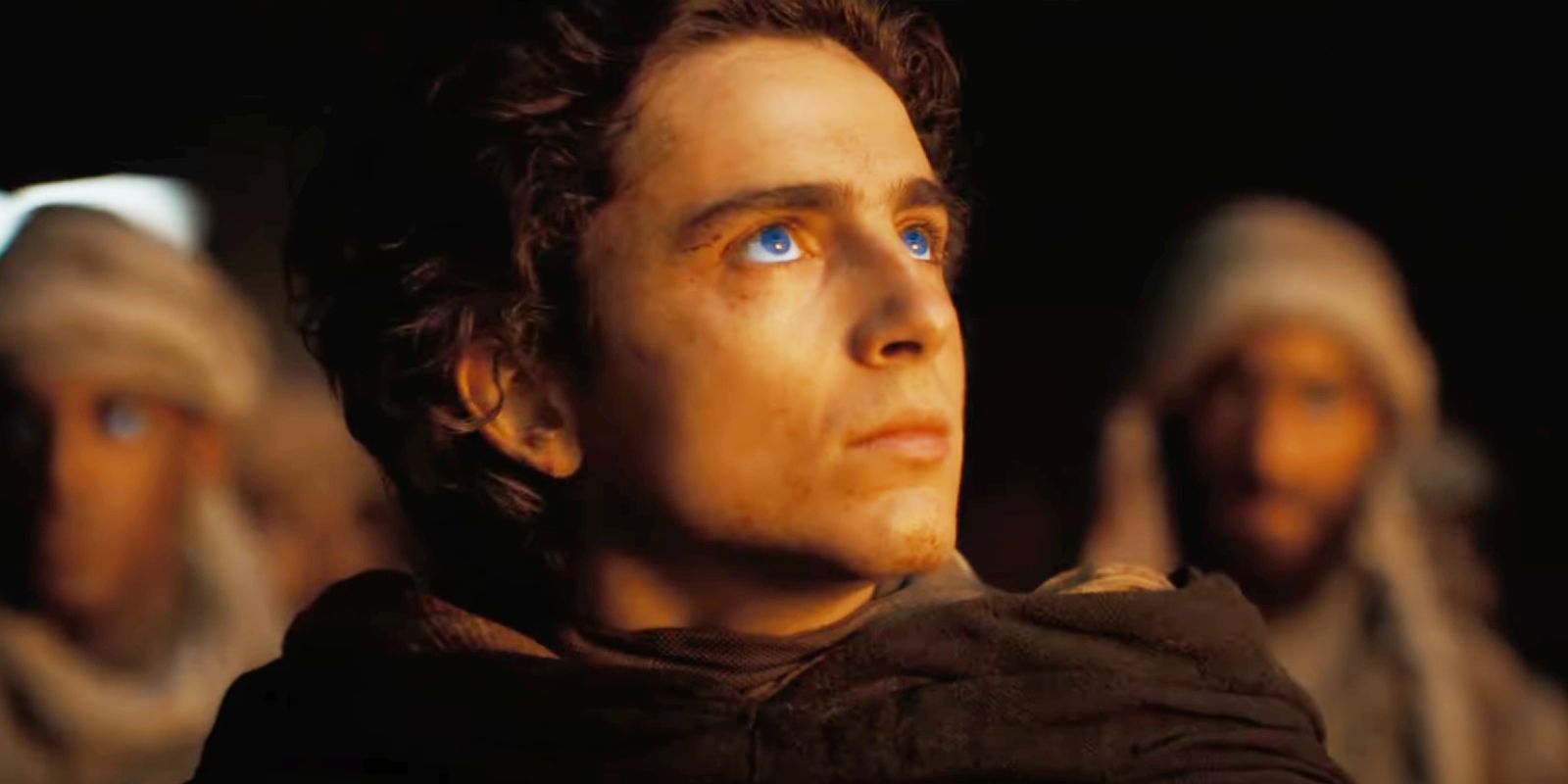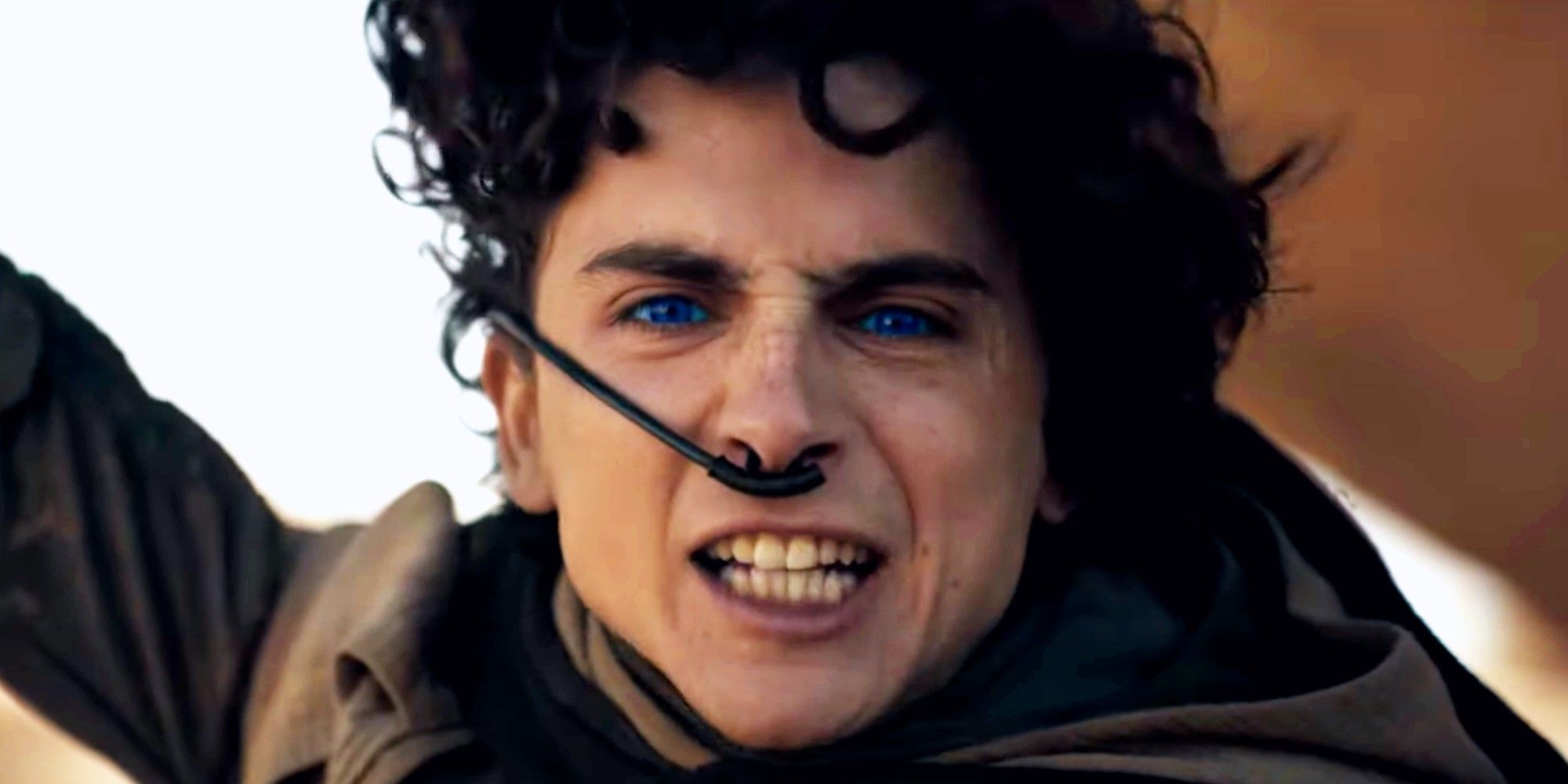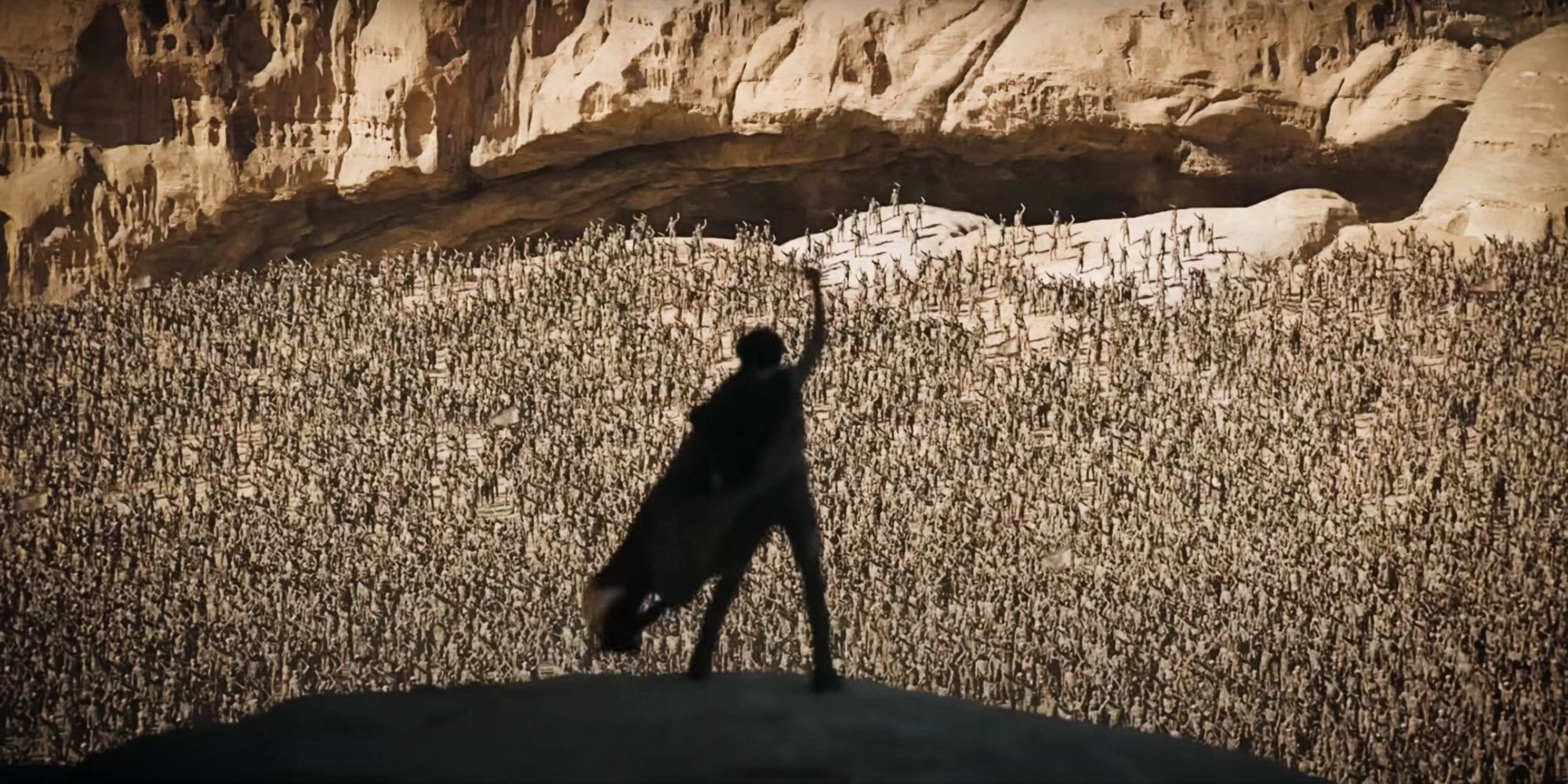The critical reason why Paul Atreides’ dreams and visions in Dune: Part Two look so stylistically different from the first movie.

Paul Atreides’ visions in Dune: Part Two look markedly different from the ones that crowded his mind in the first film, though for good reason. The recent release of Denis Villeneuve’s Dune: Part Two meant audiences could finally witness Paul’s evolution from a naive pawn in the intricate politics of the known universe into the Fremen’s prophesied Lisan al Gaib, a messiah they believe could liberate their planet Arrakis. Since the events of Dune: Part One, Paul grows exponentially, both in understanding his controversial duty to the worlds around him and in bearing his power of prescience.
As canonized in Frank Herbert’s classic Dune novel, Paul’s dreams and visions in Dune: Part One result from being a male anomaly in the Bene Gesserit bloodline, which gives him a power of prescience no man has had before. Against long-established regulations, Paul’s mother, Lady Jessica, bore him and brought him up in the ways of Dune’s Bene Gesserit, training him to manage his emerging powers. In Part One, Paul navigated pretty clear visions of the future, but in Dune: Part Two, he contends with much more dreamlike illusions, indicating a shift in his powers and ability to interpret them.
Paul’s Dune 2 Dreams Change Because Of Spice
Paul’s Prolonged Exposure To Spice Enhances The Prophetic Abilities He Already Possesses

Paul’s visions in Dune: Part Two tend to skew more stylistically abstract or metaphorical throughout the film’s events. Great examples of the sequel’s imaginative tailoring of Paul’s visions occur when he sees the consequences of going South to Arrakis and its casualties present as faceless, starving people or when he dreams of Chani dying in his arms, seemingly from the effects of a detonated atomic bomb of a possible future. Dune: Part Two staging his visions quite differently than the more straightforward prophecies of Part One makes perfect sense, as Paul has been exposed to spice a lot longer.
Paul’s visions come to recognize multiple potential outcomes of the future, and as he gains more prescience throughout Dune: Part Two , he’s better able to understand the significance of them.
His extended exposure to spice on Arrakis heightens his mystical awareness, especially over the course of Dune: Part Two, expanding his mind and changing how he perceives the future. Paul’s visions come to recognize multiple potential outcomes of the future, and as he gains more prescience throughout Dune: Part Two, he’s better able to understand the significance of them. The change in appearance of his visions helps Dune: Part Two show his growth in power and ability, while also hinting at what’s to come beyond the scope of the sequel.
How Paul’s Dune 2 Dreams Set Up Dune 3’s Story
Paul’s Dreams Forsee Tragedy In The Future Of The Known Universe





After Paul drinks The Water of Life in Dune, his powers tip into perfect prescience, causing him to make sense of the future instead of merely sorting through vague and ever-changing visions. In drinking The Water of Life, Paul can see all possible futures, including one optimal for the Fremen and the planet Arrakis. The Dune cinematic franchise suggests that this path is the most crucial – but as Paul’s Dune: Part Two visions and the original canon anticipate, the grand scheme of the known universe is a lot more complicated.
Paul’s visions in Dune forecast a massive war and political strife at the expense of millions and possibly those close to him. While the conclusion of Dune: Part Two has an air of victory to it, the franchise’s future story in the likely Dune: Messiah will see Paul embark on a deadly and devastating journey in pursuit of the Golden Path, or the optimal path for all humanity and not just the Fremen, that causes him to make difficult decisions. Dune: Part Two is just the start of Paul’s authority, and his visions are only snippets of what’s to come.

